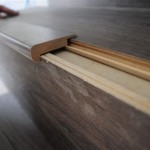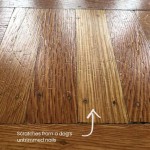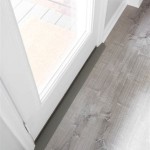Concrete Tile Flooring: A Comprehensive Guide
Concrete tile flooring has emerged as a popular choice for both residential and commercial spaces, offering a unique blend of durability, versatility, and aesthetic appeal. As a manufactured product, concrete tiles provide a controlled and consistent finish compared to poured concrete, opening a wide range of design possibilities and applications. This article delves into the properties, advantages, installation considerations, and maintenance requirements of concrete tile flooring, providing a comprehensive overview for those considering this option.
Concrete tiles are typically composed of cement, sand, aggregates, and pigments. The exact proportions and types of materials used can vary depending on the manufacturer and the desired characteristics of the final product. These materials are mixed, molded, and then cured, a process that allows the cement to hydrate and harden, binding the aggregates together to form a strong and durable tile. Manufacturing processes can involve hydraulic pressing or casting, each resulting in different textures and surface finishes.
Understanding the Advantages of Concrete Tile
Concrete tile flooring offers a multitude of benefits that contribute to its growing popularity. Its inherent strength, design flexibility, and sustainable qualities make it an attractive option for various applications.
One of the primary advantages is its exceptional durability. Concrete tiles are highly resistant to wear and tear, making them suitable for high-traffic areas. They can withstand heavy foot traffic, impacts, and even exposure to moisture and chemicals, provided they are properly sealed. This durability translates to a long lifespan, reducing the need for frequent replacements and associated costs.
Aesthetically, concrete tiles provide a versatile canvas for design expression. They are available in a vast array of colors, sizes, shapes, and textures. Pigments can be added to the concrete mix to achieve any desired hue, ranging from neutral tones to vibrant colors. Furthermore, textures can be created during the manufacturing process, mimicking the look of natural stone, wood, or even custom patterns. The modular nature of tiles allows for intricate layouts and designs, adding visual interest to any space. Concrete tiles can also be polished to achieve a smooth, glossy surface or left in a matte finish for a more rustic appearance.
From an environmental perspective, concrete tile can be a sustainable flooring choice. The use of recycled aggregates in the concrete mix can reduce the consumption of virgin materials. Additionally, the thermal mass properties of concrete can contribute to energy efficiency. Concrete absorbs and retains heat, helping to regulate indoor temperatures and reduce the need for excessive heating or cooling. This can lead to significant energy savings over the lifespan of the building.
Concrete tiles also offer good sound absorption properties, which can help to reduce noise levels in a room. This is particularly beneficial in multi-story buildings or in spaces where noise control is important.
Compared to poured concrete floors, concrete tiles offer several advantages. They provide a more consistent and predictable finish, are easier to install, and can be replaced individually if damaged. This makes them a more practical option for many applications.
Installation Considerations for Concrete Tile Flooring
Proper installation is crucial for ensuring the longevity and performance of concrete tile flooring. The installation process involves several key steps, including subfloor preparation, tile layout, setting the tiles, and grouting.
The subfloor must be clean, level, and structurally sound. Any imperfections or irregularities in the subfloor can lead to uneven tile surfaces or even cracking over time. Cracks or significant imperfections in the subfloor should be repaired before beginning the installation. A self-leveling compound may be necessary to create a perfectly flat surface.
Before applying any thin-set mortar, it's recommended to dry-lay the tiles to determine the proper layout and spacing. This helps to avoid awkward cuts or gaps, especially along walls or around fixtures. It also allows for adjustments to be made before the tiles are permanently set. The layout should consider the overall design aesthetic and ensure that the tiles are aesthetically pleasing and structurally sound.
A high-quality thin-set mortar specifically designed for concrete tiles should be used to adhere the tiles to the subfloor. The mortar should be mixed according to the manufacturer's instructions and applied evenly to the subfloor using a notched trowel. The size of the trowel notch will depend on the size and type of tile being used. The tiles should be firmly pressed into the mortar, ensuring full contact between the tile and the mortar bed. Spacers should be used to maintain consistent grout lines between the tiles.
After the mortar has cured, grout can be applied to fill the spaces between the tiles. The grout should be selected to complement the color and texture of the tiles. The grout should be thoroughly pushed into the grout lines, removing excess grout with a damp sponge. Once the grout has dried, a grout sealer should be applied to protect the grout from stains and moisture.
It is generally recommended to hire a professional tile installer to ensure that the installation is done correctly. A professional installer will have the experience and expertise to properly prepare the subfloor, lay out the tiles, and apply the mortar and grout, resulting in a long-lasting and aesthetically pleasing finished product.
Maintenance and Care of Concrete Tile
Maintaining concrete tile flooring is relatively straightforward, but proper care is essential to preserve its appearance and longevity. Regular cleaning and sealing are key to protecting the tiles from stains, scratches, and moisture damage.
Regular sweeping or vacuuming is necessary to remove dirt and debris that can scratch the surface of the tiles. Spills should be cleaned up immediately to prevent staining. For general cleaning, a neutral pH cleaner specifically designed for concrete or stone should be used. Harsh chemicals or abrasive cleaners should be avoided, as they can damage the surface of the tiles. A damp mop or cloth can be used to apply the cleaner, followed by a clean water rinse.
Sealing is an important maintenance step that helps to protect the tiles from stains and moisture penetration. A penetrating sealer should be applied to the tiles after installation and periodically thereafter, depending on the level of traffic and exposure to moisture. The frequency of sealing will depend on the type of sealer used and the manufacturer's recommendations. Before applying the sealer, the tiles should be clean and dry. The sealer should be applied evenly, following the manufacturer's instructions. Any excess sealer should be wiped off with a clean cloth.
In high-traffic areas, the tiles may benefit from occasional polishing to restore their shine. A polishing compound specifically designed for concrete or stone can be used to remove surface scratches and restore the tiles' luster. The polishing compound should be applied according to the manufacturer's instructions. A buffer or polishing machine can be used to apply the compound and achieve the desired level of shine.
For specific stains, such as oil or grease, a poultice can be used to draw the stain out of the tile. A poultice is a mixture of absorbent material, such as diatomaceous earth or baking soda, and a solvent that is appropriate for the type of stain. The poultice is applied to the stained area, covered with plastic wrap, and left to sit for several hours or even overnight. The poultice draws the stain out of the tile, which can then be cleaned with a damp cloth.
By following these maintenance tips, concrete tile flooring can retain its beauty and durability for many years, providing a long-lasting and attractive surface for both residential and commercial environments.

Tile That Looks Like Concrete Look Tiles Novoceram

47 Inspiring Concrete Floor Ideas To Transform Your Home Grey Flooring Floors Living Room Tile

Concrete Floor Tiles Cement Granada Tile

Concrete Effect Tiles

Tile That Looks Like Concrete Look Tiles Novoceram

Concrete Tiles Wall Delhi By Design

Concrete Cement Look Porcelain Tiles Eco Tile Imports

Buymytiles Importer Of High Quality Ceramic Tiles In Perth Tile Clearance Warehouse Hamilton Hill

Best Of 2024 1 Concrete Countertop Experts

Concrete Effect Tiles
Related Posts








